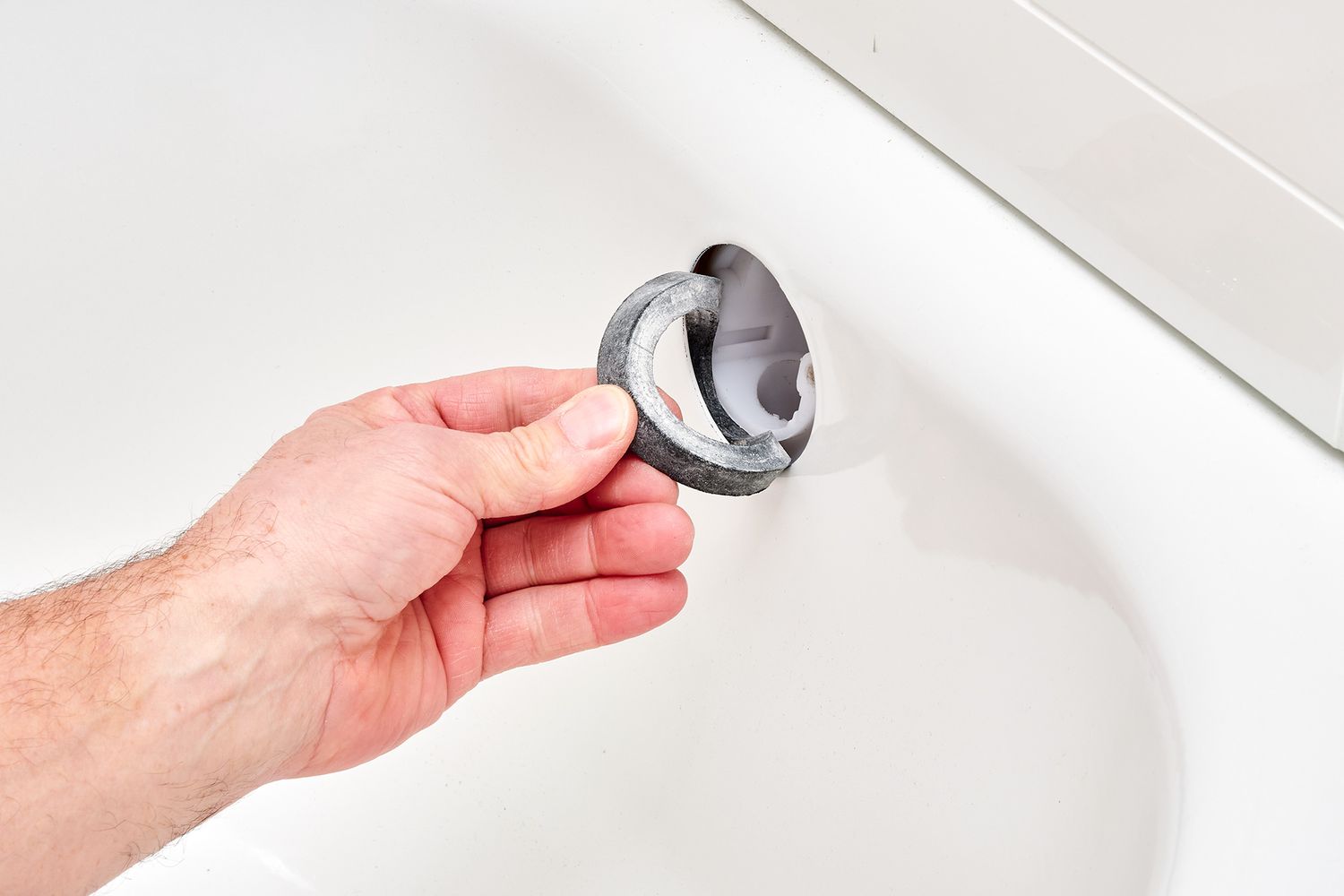Home>Furniture & Design>Bathroom Accessories>How Does Someone Drown In A Bathtub


Bathroom Accessories
How Does Someone Drown In A Bathtub
Published: February 18, 2024
Learn about the risks of drowning in a bathtub and how to prevent accidents with proper bathroom accessories. Stay safe and informed.
(Many of the links in this article redirect to a specific reviewed product. Your purchase of these products through affiliate links helps to generate commission for Storables.com, at no extra cost. Learn more)
Introduction
Bathing is a daily ritual for many, offering a soothing and rejuvenating experience. However, the seemingly tranquil act of taking a bath can turn into a tragic event if proper precautions are not taken. Bathtub drowning, though often overlooked, is a serious concern that can result in devastating consequences. Understanding the potential risks and taking proactive measures to prevent bathtub drowning is crucial for ensuring safety in the bathroom.
Every year, numerous incidents of bathtub drowning occur, highlighting the need for heightened awareness and preventive measures. While the allure of a warm bath can be irresistible, it's essential to recognize the potential dangers associated with this seemingly harmless activity. From young children to the elderly, bathtub drowning does not discriminate based on age, making it a pertinent issue that demands attention and action.
In the following sections, we will delve into the factors contributing to bathtub drowning, the risk factors associated with this peril, and effective strategies for preventing such incidents. By gaining a comprehensive understanding of these aspects, individuals can equip themselves with the knowledge needed to mitigate the risks and ensure a safe bathing environment for themselves and their loved ones.
Key Takeaways:
- Always supervise young children and individuals with limited mobility in the bathtub to prevent drowning. Slip-resistant surfaces, water depth awareness, and water safety education are crucial for a safe bathing environment.
- In case of a bathtub drowning, act swiftly, assess consciousness, and contact emergency services. Continuous monitoring and preventive measures for the future are essential for a positive outcome.
Read more: How To Thank Someone For A Dinner Party
Factors Contributing to Bathtub Drowning
Bathtub drowning can occur due to a combination of factors, and understanding these elements is crucial for preventing such tragic incidents. The following factors contribute to the risk of bathtub drowning:
Insufficient Supervision
One of the primary factors contributing to bathtub drowning is inadequate supervision, especially in the case of young children and individuals with limited mobility. A moment of inattention can lead to dire consequences, as even a small amount of water in a bathtub poses a significant risk to a child's safety. It's essential for caregivers to maintain constant vigilance and never leave a child unattended in the bathtub, even for a brief moment.
Slippery Surfaces
Slippery surfaces within the bathtub can increase the likelihood of accidents and drowning. When individuals lose their footing or struggle to maintain balance, the risk of submersion and subsequent drowning becomes imminent. Factors such as soap residue, bath oils, or a wet bathtub floor can exacerbate the slippery conditions, making it essential to implement measures to enhance traction and stability within the bathing area.
Medical Conditions and Impairments
Individuals with certain medical conditions or impairments, such as seizures, dizziness, or mobility limitations, are at a heightened risk of bathtub drowning. These conditions can lead to sudden loss of consciousness or physical control, increasing the likelihood of submersion and drowning. It's crucial for individuals with such conditions to take extra precautions and consider alternative bathing methods that minimize the risk of drowning.
Overestimation of Water Depth
In some cases, individuals may overestimate the water depth in the bathtub, leading to unexpected submersion. This can occur when individuals attempt to stand up or change positions, only to find themselves in a precarious situation due to misjudging the water depth. Such miscalculations can result in panic and disorientation, further elevating the risk of drowning.
Lack of Water Safety Education
A lack of water safety education and awareness can also contribute to bathtub drowning incidents. Without a comprehensive understanding of the potential risks and preventive measures, individuals may inadvertently overlook crucial safety practices, increasing their vulnerability to drowning accidents.
By recognizing and addressing these contributing factors, individuals can take proactive steps to minimize the risk of bathtub drowning and create a safer bathing environment for themselves and their loved ones.
Risk Factors for Bathtub Drowning
Bathtub drowning poses a significant risk, and understanding the specific factors that contribute to this peril is essential for implementing effective preventive measures. The following risk factors significantly elevate the likelihood of bathtub drowning incidents:
Insufficient Supervision
Inadequate supervision, particularly in the case of young children, is a critical risk factor for bathtub drowning. A momentary lapse in vigilance can lead to tragic consequences, as even a small amount of water in a bathtub can pose a substantial threat to a child's safety. Caregivers must maintain constant supervision and never leave a child unattended in the bathtub, as even a brief distraction can result in a life-threatening situation.
Slippery Surfaces
The presence of slippery surfaces within the bathtub significantly increases the risk of accidents and drowning. Factors such as soap residue, bath oils, or a wet bathtub floor can create hazardous conditions, making it crucial to enhance traction and stability within the bathing area. Without proper precautions, individuals may struggle to maintain their balance, leading to potential submersion and drowning.
Medical Conditions and Impairments
Individuals with certain medical conditions or impairments, such as seizures, dizziness, or mobility limitations, face an elevated risk of bathtub drowning. These conditions can lead to sudden loss of consciousness or physical control, heightening the likelihood of submersion and subsequent drowning. It is imperative for individuals with such conditions to take extra precautions and consider alternative bathing methods that minimize the risk of drowning.
Overestimation of Water Depth
Misjudging the water depth in the bathtub can lead to unexpected submersion, especially when individuals attempt to stand up or change positions. Such miscalculations can result in panic and disorientation, further increasing the risk of drowning. Individuals may find themselves in precarious situations due to overestimating the water depth, highlighting the importance of cautious movements and awareness during bathing.
Lack of Water Safety Education
A lack of comprehensive water safety education and awareness can significantly contribute to bathtub drowning incidents. Without a thorough understanding of the potential risks and preventive measures, individuals may overlook crucial safety practices, leaving them vulnerable to drowning accidents. Education and awareness initiatives are essential for equipping individuals with the knowledge needed to mitigate the risk of bathtub drowning.
By recognizing and addressing these risk factors, individuals can take proactive steps to minimize the likelihood of bathtub drowning and create a safer bathing environment for themselves and their loved ones.
Read more: How Does A Walk-In Bathtub Work?
Prevention of Bathtub Drowning
Preventing bathtub drowning requires a multifaceted approach that encompasses proactive measures, heightened awareness, and the implementation of safety protocols. By addressing the underlying risk factors and potential hazards associated with bathing, individuals can significantly reduce the likelihood of drowning incidents. The following strategies are instrumental in preventing bathtub drowning and fostering a safe bathing environment:
1. Supervision and Vigilance
Constant supervision is paramount, particularly when young children or individuals with limited mobility are bathing. Caregivers must remain within arm's reach and maintain uninterrupted vigilance throughout the bathing process. This level of supervision ensures immediate intervention in the event of any unforeseen circumstances, minimizing the risk of drowning.
2. Slip-Resistant Surfaces
Implementing slip-resistant measures within the bathtub area is crucial for enhancing traction and stability. Utilizing non-slip mats, adhesive strips, or textured surfaces can significantly reduce the likelihood of slips and falls, mitigating the risk of submersion and drowning due to slippery conditions.
3. Water Depth Awareness
Individuals should be mindful of the water depth in the bathtub and avoid overestimating it. Educating bathers, especially children, about the importance of water depth awareness can help prevent unexpected submersion incidents. Clear communication and visual aids, such as marked water depth indicators, can contribute to heightened awareness and cautious behavior during bathing.
Read more: How Much Does An Acrylic Bathtub Weigh
4. Water Temperature Regulation
Maintaining a safe water temperature is essential for preventing accidents and potential loss of consciousness due to extreme heat. Setting the water heater to a maximum temperature of 120°F (49°C) reduces the risk of scalding and minimizes the likelihood of individuals losing consciousness or control while in the bathtub.
5. Emergency Preparedness
Having essential emergency equipment, such as a reaching or throwing aid, within close proximity to the bathtub is crucial. These tools can facilitate swift intervention in the event of a potential drowning incident, enabling immediate assistance without delay.
6. Water Safety Education
Comprehensive water safety education plays a pivotal role in preventing bathtub drowning. Educating individuals about the potential risks, safety protocols, and emergency procedures fosters a culture of awareness and preparedness. This includes teaching children about safe bathing practices and the importance of never entering the bathtub without supervision.
7. Alternative Bathing Options
For individuals with medical conditions or impairments that elevate the risk of bathtub drowning, exploring alternative bathing options, such as seated showers or specialized bathing equipment, can provide a safer bathing experience while minimizing the risk of submersion incidents.
By integrating these preventive strategies into daily bathing routines and promoting a culture of safety and awareness, individuals can significantly reduce the risk of bathtub drowning and create a secure bathing environment for themselves and their loved ones.
Read more: How Much Does A Full Bathtub Weigh
What to Do in Case of Bathtub Drowning
In the event of a bathtub drowning incident, swift and decisive action is crucial for ensuring the individual's safety and well-being. The following steps outline the appropriate course of action to be taken in response to a bathtub drowning emergency:
-
Immediate Intervention: Upon discovering a potential drowning situation in the bathtub, the first step is to act swiftly. If the individual is still submerged, carefully remove them from the water as quickly as possible while ensuring personal safety. It is essential to remain calm and focused during this critical moment.
-
Assess Consciousness and Breathing: Once the individual has been removed from the water, assess their level of consciousness and breathing. If the individual is unresponsive and not breathing, immediate CPR (Cardiopulmonary Resuscitation) should be initiated. If another person is present, they can assist in calling emergency services while CPR is being administered.
-
Contact Emergency Services: If the individual remains unresponsive or exhibits signs of distress, it is imperative to contact emergency services without delay. Provide clear and concise information about the situation, including the individual's condition and any relevant details that can assist the emergency responders upon their arrival.
-
Continuous Monitoring and Support: While awaiting the arrival of emergency services, continue to monitor the individual's vital signs and provide any necessary support. If the individual regains consciousness but remains in a weakened state, ensure their comfort and stability until professional medical assistance arrives.
-
Follow Emergency Dispatcher's Instructions: If emergency services provide specific instructions or guidance over the phone, follow their directives diligently. This may include additional steps to support the individual's condition or to prepare for their arrival.
-
Preventive Measures for the Future: Following the resolution of the emergency, it is essential to assess the circumstances that led to the drowning incident and implement preventive measures to avoid similar occurrences in the future. This may involve reevaluating bathing protocols, enhancing safety measures within the bathroom, and seeking professional guidance if necessary.
By promptly executing these steps and maintaining composure during a bathtub drowning emergency, individuals can maximize the chances of a positive outcome and expedite the delivery of professional medical care. It is crucial to remain vigilant and proactive in creating a safe bathing environment to prevent such emergencies from occurring in the future.
Frequently Asked Questions about How Does Someone Drown In A Bathtub
Was this page helpful?
At Storables.com, we guarantee accurate and reliable information. Our content, validated by Expert Board Contributors, is crafted following stringent Editorial Policies. We're committed to providing you with well-researched, expert-backed insights for all your informational needs.











0 thoughts on “How Does Someone Drown In A Bathtub”